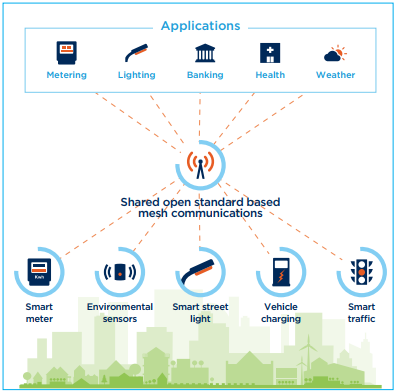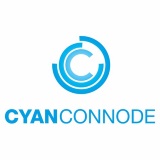As smart meter roll-outs continue across the globe, David Parker, a senior analyst at Beecham Research talks to Geoff Sarney, the senior vice president for global sales and marketing at CyanConnode to understand the challenges and different requirements large-scale smart meter rollouts place on technology providers.
David Parker: Can you give us some background on the company?
Geoff Sarney: CyanConnode is a synthesis of two companies. Cyan, a specialist semiconductor business, which came out of Cambridge Consultants in 2002. The company went public on the UK’s Alternative Investment Market (AIM) in 2005. Cyan evolved to develop mesh radio networks with a focus on smart metering solutions.
DP: And Cyan acquired Connode in July 2016?
GS: Yes. Connode began as part of Tritech AB in Sweden. Separating from Tritech in 2010, Connode had 20% of the smart metering market share in Finland by 2011 offering a standardsbased IPv6 software platform. Our combined business provides an optimised, open standard smart communications platform for the emerging IoT landscape. We are essentially a systems integrator (SI) with expertise in managing data communication across narrowband networks as well as on the ground experience in both hardware and software integration.
DP: So, your company is focused on smart metering and smart lighting applications?
GS: Yes, this is where we focus and we consider the most active market sectors for the IoT, however our offering and expertise is also suitable for alternative vertical markets. We are specialists in helping establish complete value chains and partners in regions such as Bangladesh, Iran, India, Europe, China and Brazil.
DP: CyanConnode’s solutions are based on narrowband RF mesh technology. What are the features of each solution?
GS: We offer three variants of IoT solutions based on a narrowband RF network operating in the sub GHz spectrum. Optimal is an end-to-end system, which is optimised for exceptional performance. 6LoWPAN is an open standards IoT networking solution using 6LoWPAN (IPv6 over low power wireless), enabling rapid innovation. Omnimesh, which we launched this year, is the world’s first hybrid narrowband RF mesh network. This allows the integration of CyanConnode’s solutions and third-party communication networks. IoT is such a vast industry that we have realised the true value add is fulfilling customer requirements using the most appropriate solutions in a holistic manner – not just one-size-fits-all.
DP: What do you see as the advantages of mesh technology?
GS: For metering applications, you need good inbuilding signal propagation. Meters can be in basements or deep within a building, inside cupboards and difficult to reach locations. All our mesh network solutions are self-configuring and self-healing and we provide hardware, software and network management tools. We partner with meter manufacturers and software SI’s so the technology is embedded in the meter or software architectures.
DP: How is data from the end-point meters or other devices collected and presented to the customer?
GS: Data is collected at the Network Access Device/DCU and delivered over the WAN to a hosting platform depending on existing arrangements the customer may have. Our headend software (HES) enables integration with a customer’s existing enterprise IT system such as a meter data management system (MDMS), which provides utilities with a range of services. These include scheduled reports such as energy readings, load surveys, transaction logs; along with asynchronous event monitoring such as voltage limit exceeded, supply tamper, gas leak detected and power cut event.

DP: Can Omnimesh integrate with other network technologies such as LoRa?
GS: Yes, we repurposed LoRa silicon for our mesh solution and we have a close affinity with LoRa, which is point-to-point. However, we don’t need that direct one to one relationship with the network access device, be it a micro cell or a cell tower.
DP: How do you take your solutions to market?
GS: There are different ways we can go to market. At the heart of our portfolio is the Omni IoT Platform, which has a single IoT application programme interface (API) that communicates with the meter data acquisition system (MDAS). The platform can manage our own networks as well as other communication networks. Omni IoT hosts our own or third-party applications as well as carrying out network management, security and protocol conversion functions. Through our network access device we can talk to LoRa towers, cellular networks and power line networks. The platform is our command and control network manager. Our experience is that customers have legacy networks and local restrictions on radio spectrum so the key to a successful implementation is to be able to accommodate and adapt to these.
DP: How is the Omni IoT platform accessed?
GS: Primarily in the cloud, such as with Amazon Web Services, but it can be in a data centre. We tend to start in the cloud for the first 10,000 to 20,000 endpoints on a new deployment. This allows bugs to be ironed out on the MDAS interface and any other IT system interfaces such as Oracle or SAP. There is also the issue of scope creep where features are forgotten but need to be added in the first year of deployment. As the project grows and enters full implementation, Omni IoT can be moved to a data centre hosting.
DP: Can you describe a typical or recent deployment?
GS: In Bangladesh, for example, the utility required us to host the platform on their facilities but we had unrestricted access during site acceptance test (SAT) programmes. We have a formal process of deployment of this testing from SAT-0 (Lab testing in territory and certification of radios). For example, in Thailand, the radios have to operate at 433Mhz with 10mw of power so although we’ve worked with that frequency before, we test with the local regulatory body that the radios do conform to the local duty cycle and channel plan in that band. SAT-1 is where we test specific use cases such as transaction logging and other features required for the deployment. This takes place in a controlled campus environment. SAT-2 implements full features in an end-user environment and would form part of the contract as a pre-production environment. A formal sign off process follows with training for the customer before commercial deployment (SAT-C).
DP: What would you say is the most important factor in a successful implementation?
GS: Patience! For example, CyanConnode has been in India for eight years now. This is a difficult environment that incurs power outages and leakage, through inefficient infrastructure. Our first step was to establish a new value chain to create a partner eco-system capable of delivering integrated smart metering solutions; hardware through to solutions management.
When we started there were 14 smart grid projects in India, funded by India’s Ministry of Power. Working with local partners, we won two out of the 10 projects awarded.
 CyanConnode is providing an integrated communication solution for these two projects. One of these projects, for Chamundeshwari Electricity Supply Corporation Limited (CESCOM), Mysore, is about to undergo final testing and is the leading project in these pilots. This is not a proof of concept or trial and in July this year, Energy Minister D K Shivakumar confirmed that CESCOM will expand the smart grid project to the entire city after inspecting the first phase. Our success has been built on partnership, working over a three year period. As I said, the key word here is patience – alongside strong technology – to achieve mass success.
CyanConnode is providing an integrated communication solution for these two projects. One of these projects, for Chamundeshwari Electricity Supply Corporation Limited (CESCOM), Mysore, is about to undergo final testing and is the leading project in these pilots. This is not a proof of concept or trial and in July this year, Energy Minister D K Shivakumar confirmed that CESCOM will expand the smart grid project to the entire city after inspecting the first phase. Our success has been built on partnership, working over a three year period. As I said, the key word here is patience – alongside strong technology – to achieve mass success.










